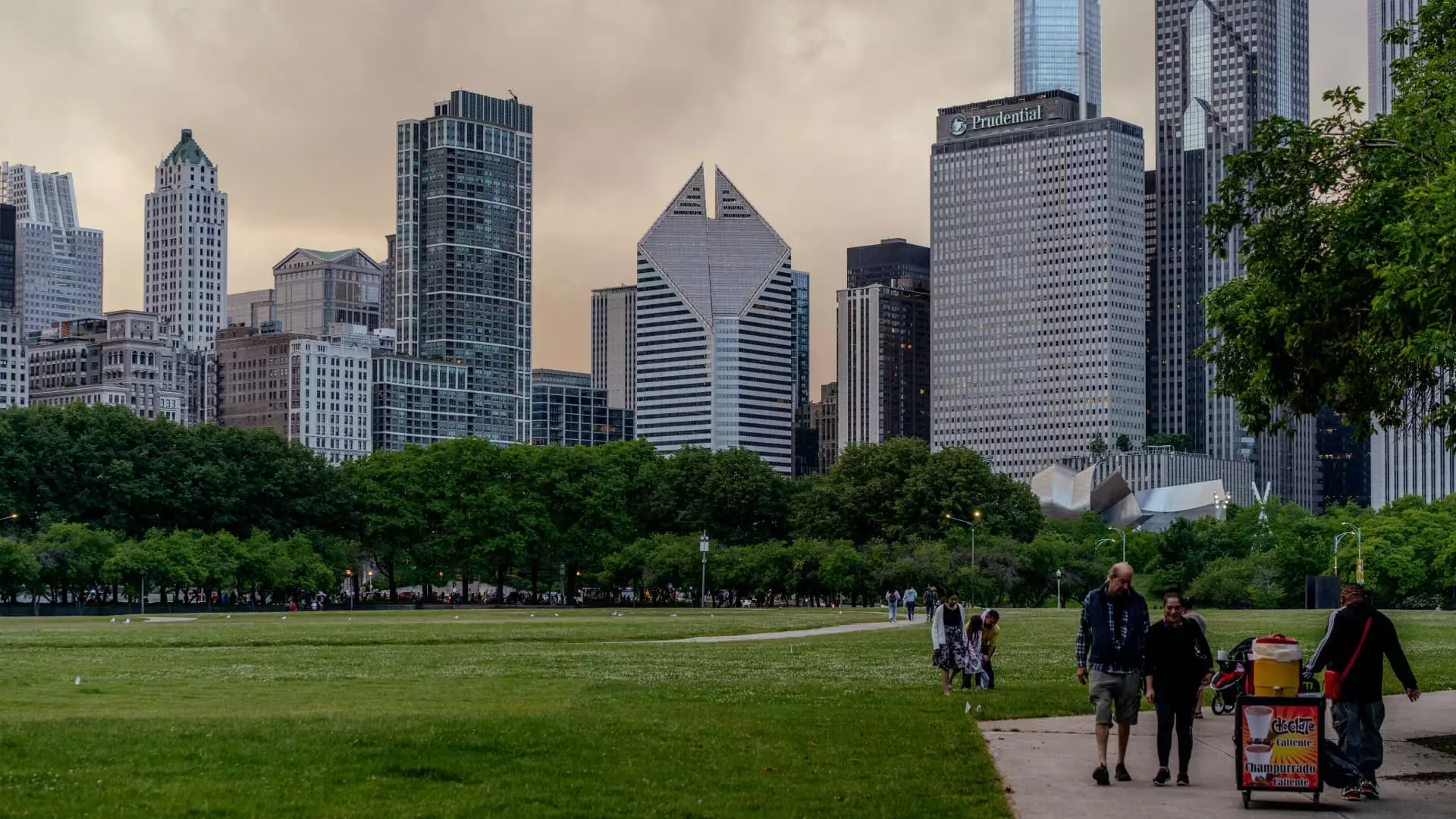In recent months, the rental market in the United States has been characterized by a stark contrast between soaring apartment prices in some cities and a decline in rent inflation in others. As major metropolitan areas face a wave of increasing demand, the consequences for renters have become pronounced, reshaping the landscape of affordable housing in America.
Prominent cities like Syracuse, New York, have seen staggering rent hikes, with asking prices for one-bedroom apartments rising by nearly 29% and two-bedroom apartments by 25% from June 2023. This trend is not isolated; several major urban hubs have reported similar increases. Data from Zumper’s National Rent Report reveals that cities such as Lincoln, Chicago, Buffalo, and New York City have experienced surges in rental prices of over 10%.
The dramatic spike in rental rates can be attributed to the classic economic principle of supply and demand. In these cities, the availability of rental spaces has not been able to keep pace with an influx of potential renters. This imbalance has turned the rental market into an increasingly competitive space, where potential tenants find themselves at the mercy of rapidly rising prices. With vacancy rates plummeting—exemplified by New York City’s drop to a historic low of 1.4%—the city has clearly entered a phase of acute housing scarcity.
Conversely, a different scenario unfolds in other metropolitan regions. Cities such as Oakland, California, and Raleigh, North Carolina, are witnessing declines in rents, with one-bedroom apartments decreasing by at least 5%. This divergence underlines a critical point: while major urban centers struggle with affordability, some secondary cities are experiencing a cooling market, offering a glimmer of hope for renters seeking more manageable housing costs.
Zumper’s analysis shows that asking rents in areas with surplus apartment inventories can afford to fall, providing essential reprieve for those who find the ballooning costs elsewhere inaccessible. The differences in rental price shifts highlight the variable nature of demand across different regions, creating pockets of opportunity even in a generally inflationary climate.
When placed within a broader national framework, the overall rent increase is modest, with a rise of merely 1.5% for one-bedroom and 2.1% for two-bedroom apartments across the country since June 2023. Despite these averages, the story is far from uniform. Major metros such as New York City are marked as the most expensive, where typical renters face a staggering $4,300 monthly for a one-bedroom unit.
The contrasting experience in cities like Akron, Ohio, or Wichita, Kansas, where rents can be as low as $730, further emphasizes the stark geographical inequality in the rental market. This juxtaposition showcases how location plays a pivotal role in determining housing costs, compelling tenants to weigh options that may lead them to relocate in search of better affordability.
As increasing rental costs take their toll, financial strain has become a pressing issue for many households. According to Zillow, a typical renter now allocates about 30% of their income to housing, an increase from pre-pandemic levels. This burden is especially acute for lower-income individuals in cities like New York, where about 86% of residents earning less than $25,000 annually face severe rent burdens.
The spike in rents can have far-reaching implications, including an alarming rise in missed payments and arrears. These conditions not only affect individual financial stability but also threaten wider economic health, as marked increases in rent burden can deter potential buyers from participating in the housing market, thereby stifling the real estate sector.
The recent inflationary trends in rents mark a departure from the early pandemic period, during which rental prices experienced a sharp decline as urban living became less attractive. Digital nomads and those seeking outdoor spaces migrated to suburban areas, affecting rental demand. However, as cities have reopened and in-office work regains prominence, a subsequent surge in demand has reversed these earlier declines, underscoring the volatile nature of urban rental markets.
Economic forecasts indicate that while annual rent inflation peaked at 9% in early 2023, it has since begun to cool, currently hovering around 5%. What this means for the future remains uncertain, but it is clear that the rental landscape will continue to evolve, shaped by both macro and micro economic factors, as well as shifts in societal behavior and preferences.
The American rental market is a complex tapestry, with some cities experiencing unchecked inflation while others offer an oasis of affordability. As urban dynamics shift and the impacts of the post-pandemic world continue to unfold, both renters and policymakers must navigate this challenging environment with care and insight.

